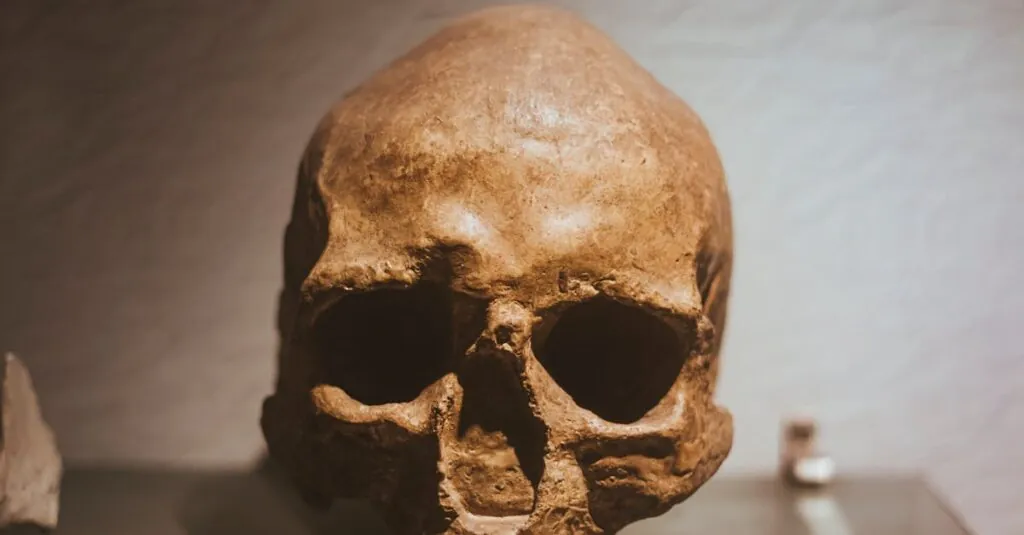Losing a dead iPhone feels like misplacing a slice of pizza—utterly tragic and a little ridiculous. You frantically search every pocket and cushion, wondering if it’s playing hide-and-seek or if it’s just gone for good. But fear not! Even when your beloved device is lifeless, there are clever tricks to track it down.
Table of Contents
ToggleUnderstanding The Challenge
Losing a dead iPhone presents unique difficulties that can be frustrating. The search often starts with uncertainty—one may question if the phone is simply misplaced or out of battery. Given the lack of power, standard tracking methods can seem ineffective.
Detection methods typically rely on locating the device through the Find My iPhone feature. Activation of this feature before the phone loses power remains crucial. It’s possible to check for location history if the device had connection within the last 24 hours.
Tracking a dead iPhone also becomes challenging due to factors like limited data access and network dependence. Using a computer to sign into iCloud can sometimes provide valuable information about the last known location. This information can help narrow down the area for search efforts.
Frustration levels often rise if users haven’t enabled location services. Bluetooth tracking devices offer a solution that facilitates easier recovery. These devices can pair with smartphones, providing an additional safety net for future scenarios.
Technology plays a significant role in overcoming these challenges. Various apps and services enhance the likelihood of finding a device—even one that’s unexpectedly non-responsive. Prior preparation, such as enabling notifications for Find My iPhone and familiarizing oneself with tracking options, ultimately aids in recovery efforts.
Determination remains key during this process. With the right resources and approaches, locating a dead iPhone remains a manageable task.
Methods To Locate A Dead iPhone
Locating a dead iPhone poses unique challenges. Fortunately, several methods provide potential solutions.
Using Find My iPhone
Find My iPhone remains the primary tool to locate devices. It offers options even if the phone is powered off. Users activate this feature before losing power, allowing tracking of the last known location. If Find My iPhone was enabled, accessing the iCloud website on a computer is straightforward. Upon logging in, users can view their device’s last recorded location. The map provides useful information, enhancing the search process considerably.
Checking Recent Locations
Exploring recent locations is crucial when tracking a dead iPhone. Users may find data within the location history if the device connected to the internet in the last 24 hours. Checking the Maps app or the location settings can reveal useful insights. Reviewing these records helps identify where the phone may be. Prior knowledge of recent sites visited narrows down the search area significantly. Searching through location history proves invaluable in guiding the retrieval efforts.
Importance Of Preparation
Preparation ensures users can locate their iPhones, even when they’re unresponsive. Methods to facilitate this search exist and can make a significant difference.
Enabling Location Services
Location Services must be enabled on the iPhone for effective tracking. This feature allows the phone to share its location with applications like Find My iPhone. To enable it, go to the Settings app, tap Privacy, then Location Services, and turn it on. Users can fine-tune settings to allow specific apps to access location data. Activating this feature ahead of time ensures that the device can be found even if it loses power. Remember, without Location Services, potential tracking options diminish significantly.
Setting Up Find My iPhone
Setting up Find My iPhone is crucial for locating a device. Users should navigate to Settings, then tap on their name at the top, followed by iCloud, and select Find My iPhone. This feature not only enables tracking but also allows users to send sounds to the device or remotely lock it. Enabling the “Send Last Location” option helps in receiving the last known location before the battery dies. Proper setup of this feature increases chances of recovering a lost iPhone, making it a vital step in user preparation.
Alternative Solutions
Finding a dead iPhone can seem daunting, but other strategies exist beyond standard methods.
Contacting Your Mobile Carrier
Mobile carriers often assist in locating lost devices. Customers can reach out to their carrier’s customer service for support. Some carriers provide tracking services that might reveal the phone’s last known location. Representatives can access network data to see if the device was connected in recent hours. If available, this information can aid the search significantly. Additionally, keeping the carrier informed about the situation might lead to further suggestions for recovery.
Using Third-Party Apps
Third-party apps enhance the chances of locating a dead iPhone. Certain apps offer location tracking features that work independently of standard phone services. Users who had these apps installed pre-lost iPhone might retrieve location history. This function can clarify where the device was last active. Some applications utilize Bluetooth technology to emit signals, aiding in recovery even when the phone’s battery is dead. Researching and selecting the right tracking app can provide valuable solutions in future instances as well.
Finding a dead iPhone might seem daunting but with the right strategies in place it can become a manageable task. Utilizing features like Find My iPhone and accessing iCloud can provide crucial information that aids in the search.
Preparation plays a key role in ensuring users are equipped to locate their devices even when they’re unresponsive. Enabling Location Services and activating the “Send Last Location” option can significantly enhance tracking capabilities.
Incorporating Bluetooth tracking devices and exploring third-party apps can further streamline the recovery process. By staying proactive and familiarizing oneself with available resources it’s possible to minimize the stress of losing a phone and increase the likelihood of a successful recovery.



